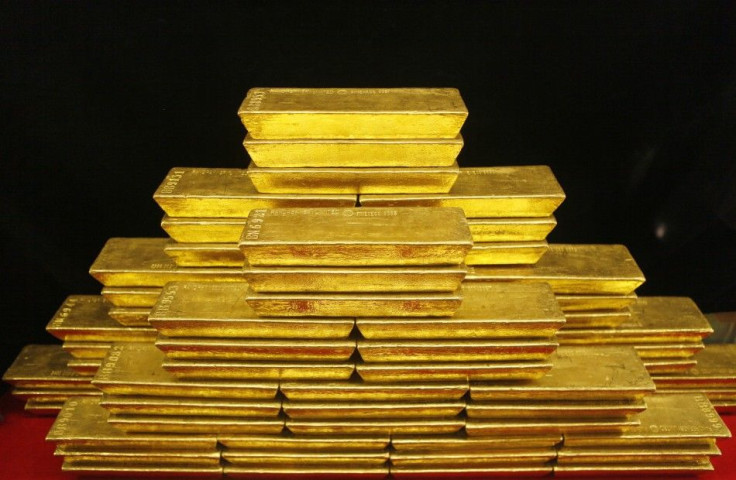Gold Rising in Asian, European Trading

Gold headed for its third straight daily rise on Monday, having in September posted its largest monthly slide since 2008, after Greece warned it will miss deficit targets set to avoid bankruptcy, unleashing a sell-off in equities and commodities.
European equities slid by more than 2 percent, while copper fell nearly 4 percent and crude oil dropped 1 percent, after Greece said it will miss the deficit targets set in July as part of a massive bailout package, showing that drastic steps to avert bankruptcy may not be enough.
Having staged its largest one-month drop since the credit crunch of 2008 in September as the escalation in the Greek crisis prompted an investor stampede to the comparative safety of the dollar, gold has for now assumed its more habitual trading pattern of rising in times of financial or economic uncertainty.
Spot gold rose by 2.2 percent to trade at $1,658.30 an ounce by 0944 GMT. U.S. gold futures for December delivery rose 2.5 percent to $1,662.50 an ounce.
Oil is down, so it does look like that classic safe-haven (play) . it could all be down again in few hours time, so it's hard to know if it's a sustained recovery, said Mitsubishi analyst Matthew Turner.
We have got Bernanke speaking tomorrow, we have the ECB rate decision on Thursday and non-farm payrolls on Friday. So it's a data-packed week . You'd think the balance of the news would be gold-friendly, or at least what we used to describe as gold-friendly before it fell so sharply, which was bad economic data and bad economies and loose monetary policy. The problem for gold could be if any serious rallies will see selling into them if some people think it's a good chance to get out.
DATA BLITZ
The European Central Bank holds a regular policy meeting this week at which it is widely expected to leave benchmark euro zone rates on hold at 1.5 percent and signal a shift in its interest-rate rise cycle after a raft of weak economic data and a rapid deterioration in funding conditions for some of the region's more indebted nations.
Also on the slate, Federal Reserve chairman Ben Bernanke is scheduled to testify on the economic outlook to the Joint Economic Committee on Tuesday.
The head of the U.S. central bank put markets on notice last week, signalling that despite already having spent trillions of dollars to stimulate growth, the Fed would do more if inflation falls too far and the threat of deflation grows.
Meanwhile, a draft budget by the Greek government forecast bigger deficits than expected despite harsh new austerity measures raised doubts over a planned second international bailout, hurting the euro and sending euro-priced gold up by more than 2 percent in its biggest one-day rally in a month.
The gold price fell by nearly 11 percent in dollar terms in September, having hit a record high in the early part of the month, its largest one-month fall since October 2008, while on a quarterly basis, the third three months of 2011 marked gold's strongest performance since the final quarter of last year.
With the 20 percent fall in the gold price from September's peak at $1,920.30 an ounce, physical consumers of the metal have been lured back into the market, even though speculators cut their investment the precious metal in favour of owning U.S. dollars.
The latest data from the Commodity Futures Trading Commission on holdings of gold futures shows speculators cut their position to its lowest since the second quarter of 2009, highlighting the move from hard assets to U.S. dollars that stripped 8.8 percent off the bullion price in two weeks.
Meanwhile, currency speculators raised their bets on the U.S. dollar to their highest since June 2010.
After the recent washout, gold positioning is far from extended and this is quite a bullish signal for price strength ahead. The 'clean' nature of current spec positions, along with physical and long-term demand, is creating a very healthy foundation for gold to climb from, wrote UBS analyst Edel Tully.
Markets are closed in world number two consumer China for a public holiday. But demand for other key gold-buying regions has picked up in the last couple of weeks, pushing Asian premiums for delivery to their highest since the start of the year.
In world number three consumer Turkey, gold imports rose 18.23 tonnes in September, their highest in exactly three years, according to data from the Istanbul Gold Exchange.
In other precious metals, silver rose by 3.2 percent to $30.84 an ounce, having fallen by nearly 28 percent in September, its biggest one-month fall since the early 1980s.
Echoing the weakness plaguing other industrial commodities, platinum fell by 0.7 percent to $1,514.24 an ounce, while palladium lost another 1.2 percent on the day to trade near one-year lows at $602.72, after having shed 22 percent last month, its largest monthly fall in three years.
© Copyright Thomson Reuters 2024. All rights reserved.






















